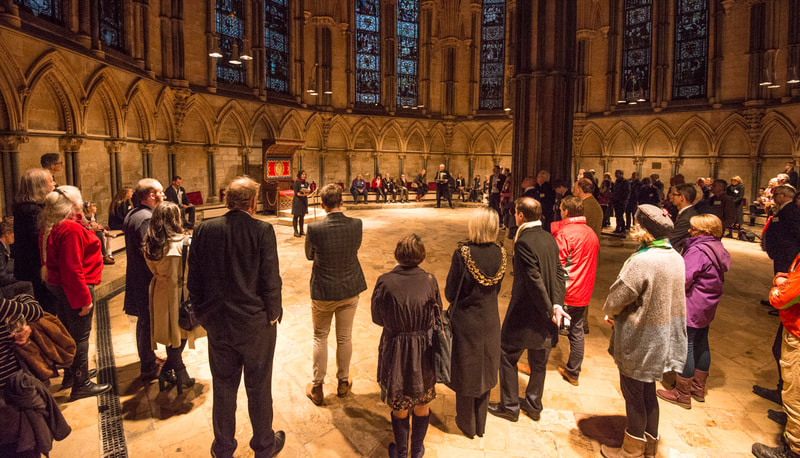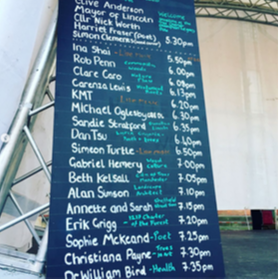|
Charter of the Forest of 1217 It was 6 November and the year 1217, when King Henry III signed the Charter of the Forest, which was incorporated into the Magna Carta. This Charter allowed the people of England to access and use the Royal Forests, which had been set aside as the King's hunting grounds. The Royal Forests covered about a third of the country at this time. Before this, under the reign of the previous monarch King John, anyone found entering Royal Forests to get firewood or forage and hunt for food could be fined or severely punished, imprisoned or sent to their death for stealing. The Charter of the Forest legislation rectified this, a document that moved toward democracy and social justice, reducing the amount of land under royal control allowing England's people to use the forests again. Today, Lincoln Castle holds one of the only two original copies of the 1217 Charter of the Forest, which sits alongside Lincoln Cathedral's Magna Carta from June 1215. Charter for Trees of 2017 At the time of the 1217 Charter of the Forest, people needed the woodland and trees for their survival – today, however, it is the people who are stepping up to protect and ensure the survival of the trees and woodland. The Charter for Trees, Woods & People is the initiative of The Woodland Trust, the largest woodland conservation charity in the United Kingdom, dedicated to creating, protecting, and restoring native woodland heritage. The project, led by Matt Larsen-Daw coordinated over 70 organisations and 300 community groups to deliver the Charter for Trees. This modern day Charter outlines ten principles to guide the protection and survival of trees and woodland, along with policy and practice in the United Kingdom for years to come.
Raising the Next Generation of Environmentalists Sir David Attenborough has said, “No one will protect what they don’t care about and not one will care about what they have never experienced.” The big question before us today is, how are we going to raise the next generation of environmentalists? Because we are going to need people who are care about trees, we are going to need people who are passionate about wildlife, and the eco-system. Perhaps, never before has there been a more important time where we need people who care about the Earth. Nature Play began in 2011 when our daughter had just turned one. My husband and I both grew up in the countryside with a connection to nature, and we both found this connection to be very important. So here we were, raising our child in the fast-paced city of London. This had us slightly worried. How was she going to know the language of the trees and to read the weather? How was she going to understand the bird song and fall in love with insects? How would she get to know the seasons with every cell in her body? How would she have that first-hand relationship with nature and the Earth? Because when we have a relationship, we care, and when we care, we are passionate. The answer was simple: To spend time. Regularly. Surrounded by nature. With no agenda. This recipe may sound familiar to many of you here tonight who are passionate about nature. This recipe is something many of us have in common from our own childhoods. And this is exactly what Nature Play does. We create the space, and provide the place and time with no agenda – for children to explore, connect and play. Without an agenda, we find the child can soak in their environment, get curious, and they begin to play. We don’t take toys or tools into our sessions, their attention shifts to what is around them. This way, each child creates their own dialogue with nature. Some of what we see at Nature Play sessions, are things like young infants caressing bark, running their fingers through soil, watching trees and mottled-light move. When they are crawling, they use fallen logs to rise up, slopes to navigate gravity, and all sorts of treasures are found so close to the Earth. When fully mobile, the low branches become houses, sticks become horses to ride or brooms to sweep, and fallen logs are balancing beams or trains to ride with leaves for tickets. They swarm in groups, potter on their own or simply enjoy sitting peacefully next to mum. With no agenda, the very nature of childhood has the chance to sprout and grow. There are now several Nature Play groups now, all running weekly sessions, and they are free to attend. Sessions are held in all weather, all seasons and are for all ages. By offering these sessions, we hope to encourage parents with their children to spend time, regularly, surrounded in nature, with no agenda. This not only benefits us, but we feel that it is particularly beneficial for children to grow a first-hand relationship with nature. A first-hand relationship with nature they will later care about and will become passionate about — that passion which flourishes in every environmentalist. Thank you. Links and Further Reading Find the 10 principles of the charter here, www.woodlandtrust.org.uk/support-us/act/tree-charter/ A fine document was made of the new Charter, the ten principles written by wordsmith Fiona Stafford and drawn up by calligrapher Patricia Lovett in oak gall ink on archive-quality paper into a document. Read more about that here from calligrapher, Patricia Lovett www.patricialovett.com/charter-for-trees-woods-and-people A little more about the original documents that sit at Lincoln Castle, www.lincolncastle.com/explore/magna-carta |
|
Copyright © 2024 Nature Play
|







 RSS Feed
RSS Feed